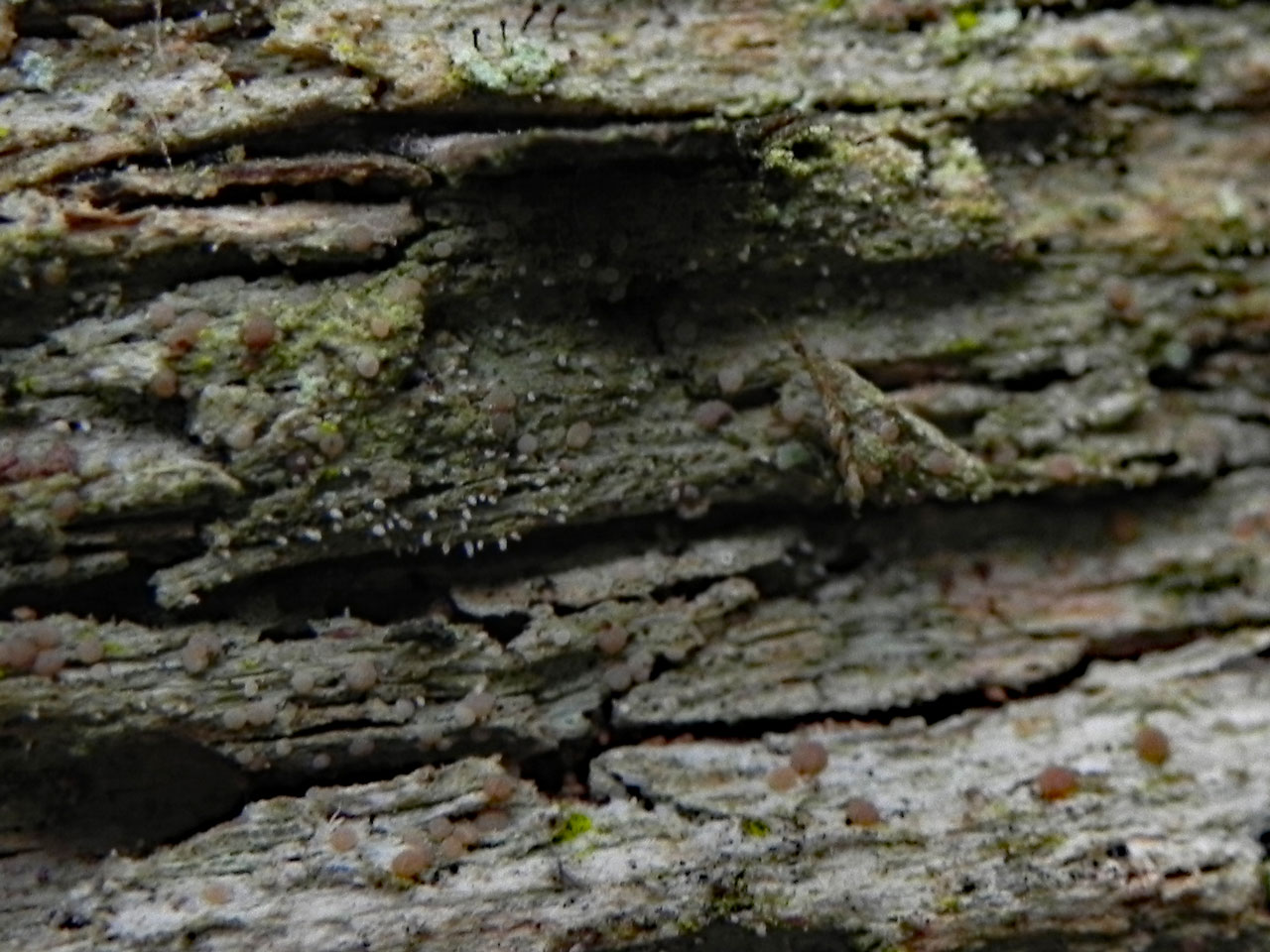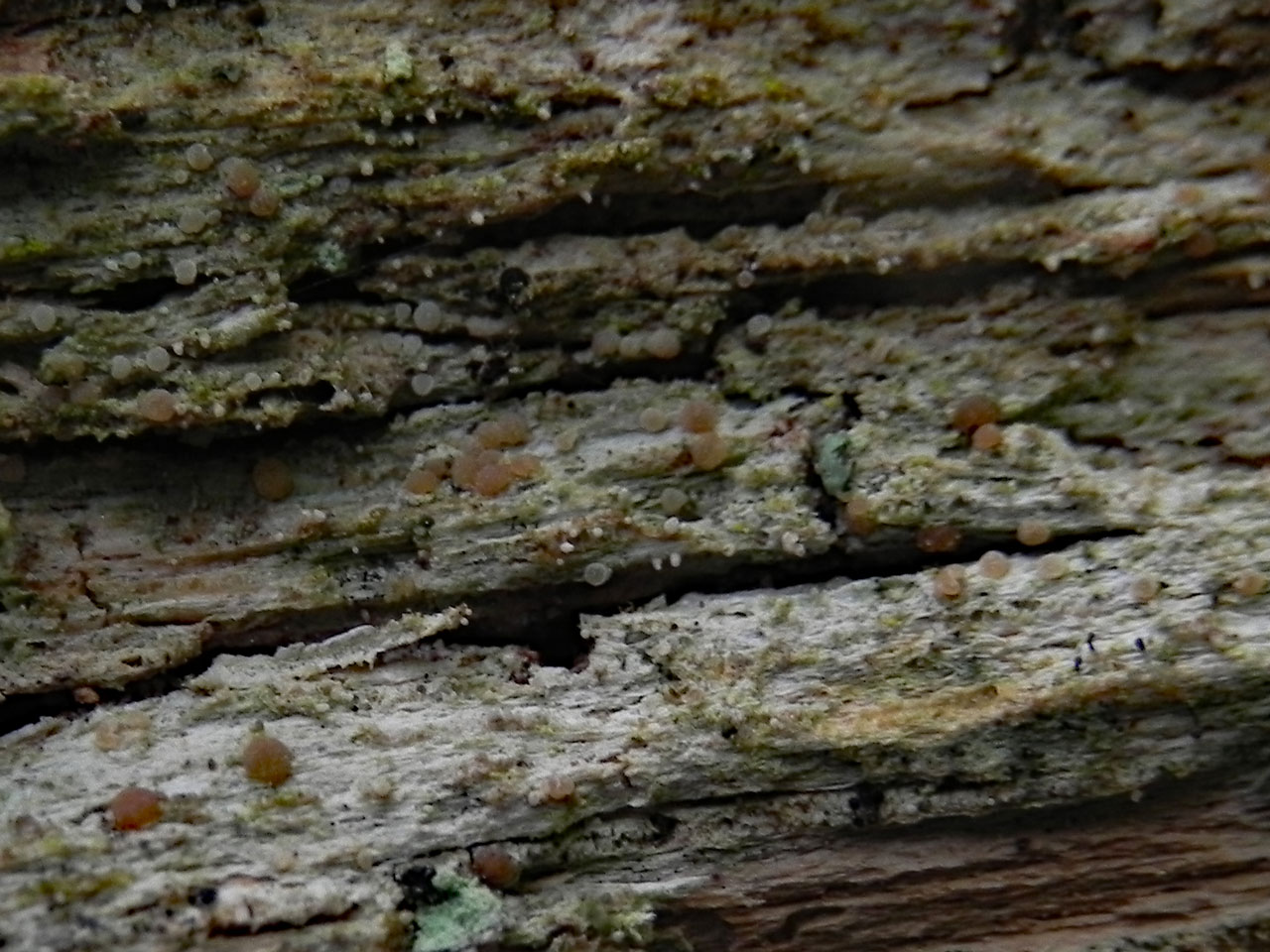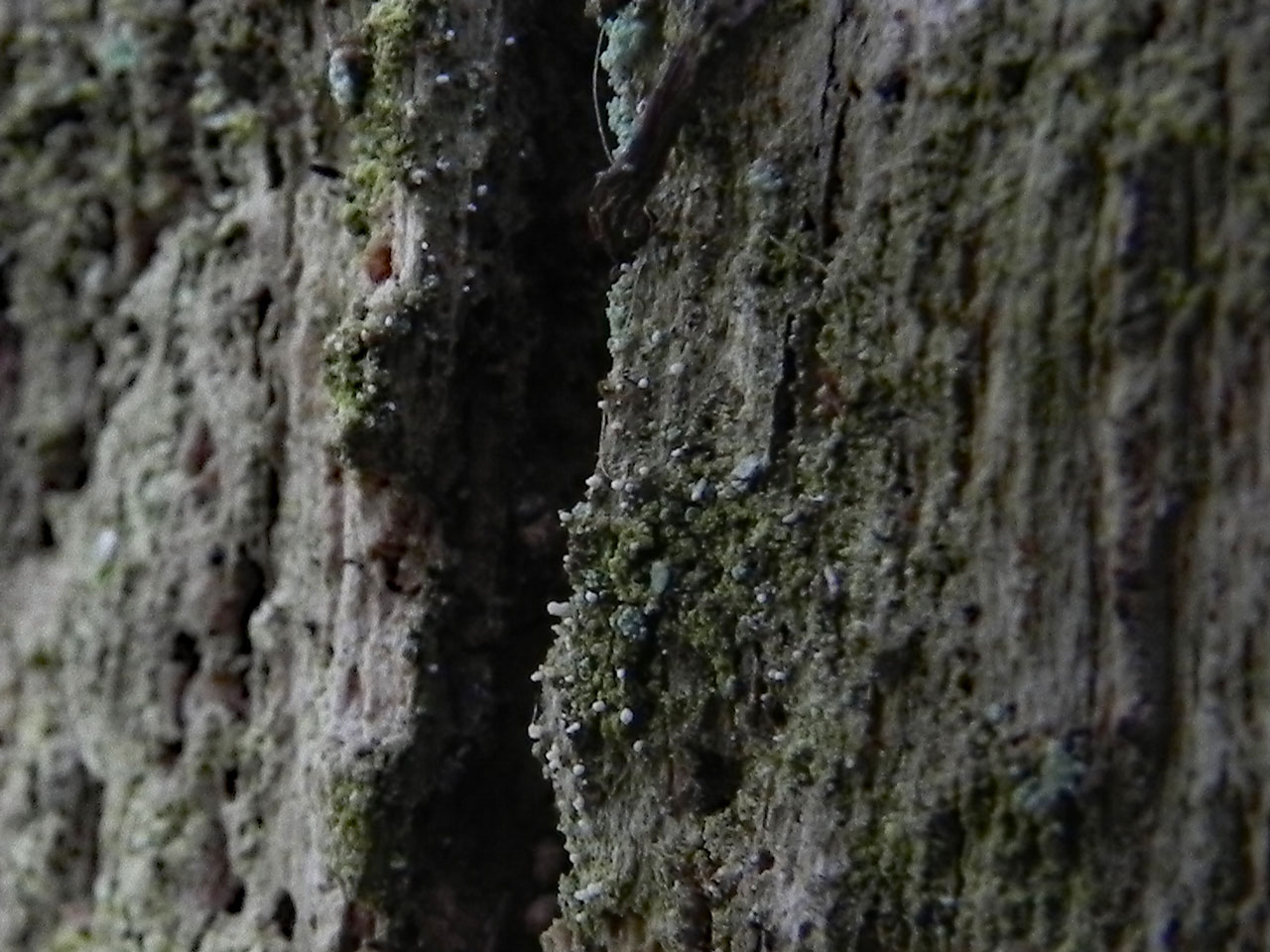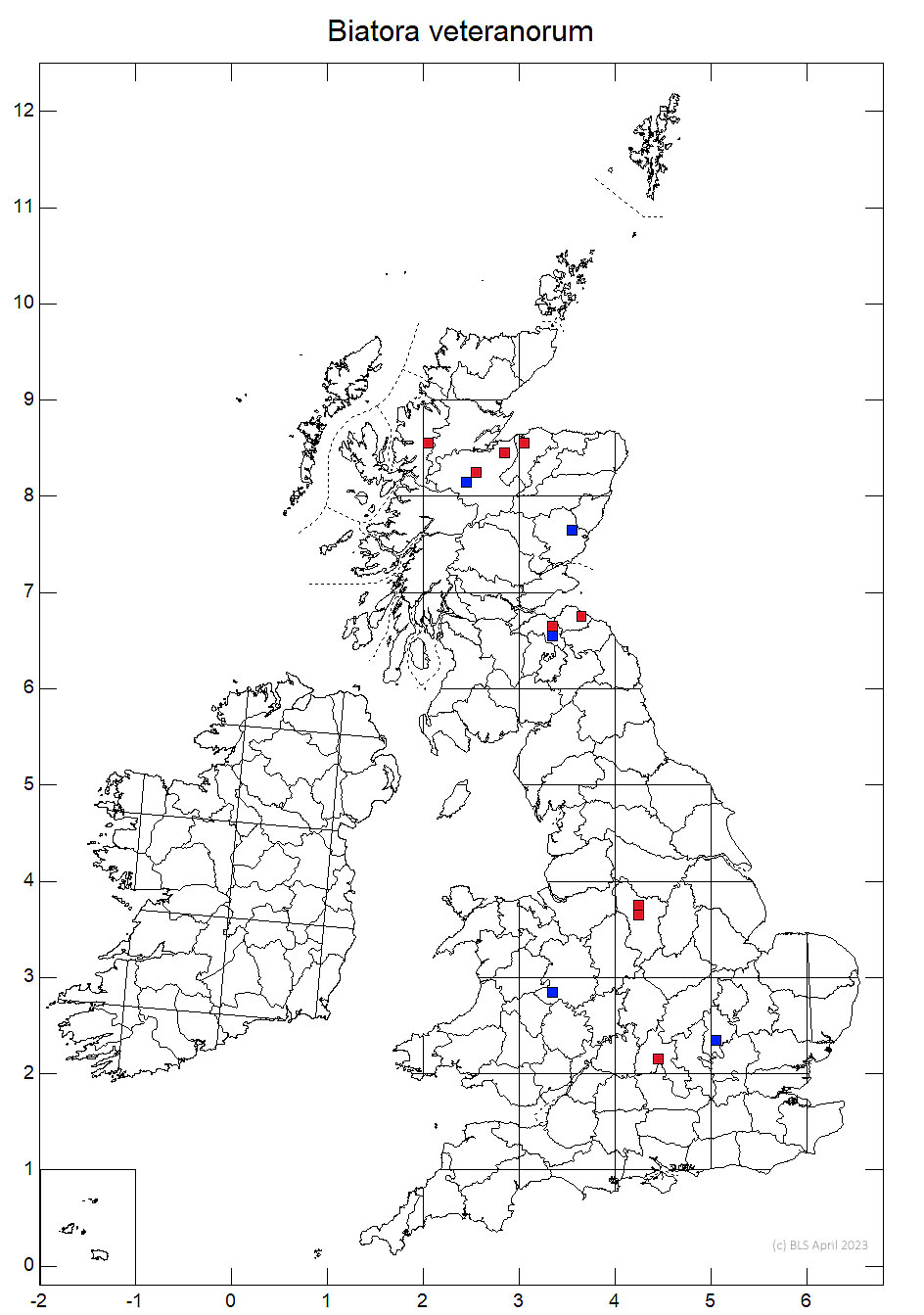A rare veteran tree specialist. The tiny white stalked pycnidia on an indistinct thallus on dry bark or lignum on veteran trees in the east of Britain are very distinctive once spotted. Other species with similar stalked pycnidia on trees are all Micarea species with well developed green thalli and found in more strongly oceanic habitats.
Thallus effuse, thin, pale, indistinct. Apothecia 0.16–0.4 mm diam., white, becoming pale brown; true exciple with conglutinate radiating hyphae, poorly developed; epithecium pale orange with minute crystals dissolving in K; hymenium ca 30 μm high, colourless; paraphyses rarely branched, 1–1.5 μm diam., broadening at the apex to ca 3 μm diam. Asci clavate, Biatora-type. Ascospores ellipsoidal, 1-septate, (6.5– ) 8–10 (–11.5) × 2.3–3 μm. Pycnidia sessile to short-stalked, white-pruinose, 80–120 μm diam., 80–150 μm high; conidia aseptate, bacilliform, colourless, 2.8–3.5 (–3.8) × 0·8–1 (–1.2) μm. Chemistry unknown.
The stalked pycnidia and habitat on lignum or dry bark on ancient trees are diagnostic. B. ligni-mollis differs in having a UV+ white thallus, 1- to 2 (-3)-septate ascospores and sessile, globose pycnidia, with longer bacilliform (3.5– 5.5 × 0.8–1.5 μm) or ovoid conidia (2.5–3 × ca 2 μm). Other species with white stalked pycnidia are Micarea pycnidiophora (pycnidia C+ red), and M. stipitata (conidia 6–8 × 1–1.8 μm). The stalked pycnidia of Micarea hedlundii are also white-pruinose but have a brownish tone from the colour of the pycnidia and it grows on damp wood in western forests.
Placed in the new genus Coppinsidea by Kondratyuk et al. (2019), but the molecular phylogenetic evidence for this does not appear to be strong.
On lignum or dry bark of ancient trees (mostly Quercus but also Salix) in old growth woodland and parklands in less oceanic eastern areas

Rare with scattered records from E. England, E. Scotland (Oxfordshire & Bedfordshire to Ross & Cromarty).
A Vulnerable lichen with small populations, confined to veteran trees, in a few old growth woodlands and parklands.
Britain: Vulnerable & an International Responsibility Species
Scotland: Priority Taxon for Biodiversity in Scotland
Cannon, P., Ekman, S., Kistenich, S., LaGreca, S., Printzen, C., Timdal, E., Aptroot, A., Coppins, B., Fletcher, A., Sanderson, N. & Simkin, J. (2021). Lecanorales: Ramalinaceae, including the genera Bacidia, Bacidina, Bellicidia, Biatora, Bibbya, Bilimbia, Cliostomum, Kiliasia, Lecania, Megalaria, Mycobilimbia, Phyllopsora, Ramalina, Scutula, Thalloidima, Toninia, Toniniopsis and Tylothallia. Revisions of British and Irish Lichens 11: 1-82. Link
Kondratyuk, S.Y., Lőkös, L., Farkas, E., Jang, S.-H., Liu, D., Halda, J., Persson, P.-E., Hansson, M., Kärnefelt, I., Thell, A. & Hur, J.-S. (2019). Three new genera of the Ramalinaceae (lichen-forming Ascomycota) and the phenomenon of presence of ‘extraneous mycobiont DNA’ in lichen associations. Acta Botanica Hungarica 61: 275-323.
Text by Neil A Sanderson based on Cannon et al (2021)



